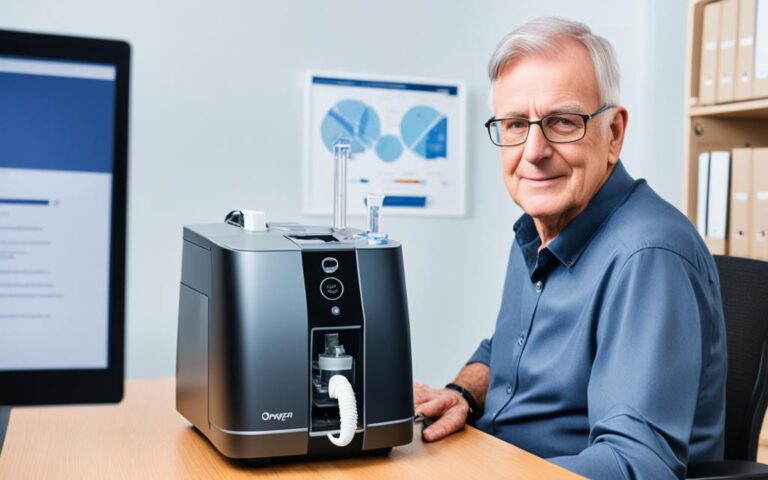Real-time computing is about systems that must quickly react to events. These systems have a “real-time constraint.” This means they have to respond fast, usually in milliseconds or microseconds. It’s essential for critical safety tasks. Think of aircraft controls or anti-lock brakes in a car. To manage this, real-time software uses special programming languages, operating systems known as RTOSes, and networks designed for quick responses.
Key Takeaways
- Real-time computing ensures swift and timely responses to events within specified time constraints or deadlines.
- It is vital for safety-critical applications such as control systems for aircraft or anti-lock brakes.
- Real-time software utilizes synchronous programming languages, real-time operating systems (RTOSes), and real-time networks for efficient processing.
- Real-time computing guarantees response times in the order of milliseconds or microseconds.
- Real-time systems are becoming pervasive in industries such as defense, space systems, networked multimedia systems, and embedded automotive electronics1.
Types of Real-Time Systems Based on Timing Constraints
Real-time systems are divided based on their timing needs, from strict to flexible. Each system type has its own set of rules for meeting deadlines and keeping up performance.
Hard Real-Time Systems
Hard real-time systems can’t miss deadlines. They are vital for tasks where delay equals failure. Critical setups like nuclear systems, medical appliances such as pacemakers, aerospace controls, and military operations2 rely on them.
Firm Real-Time Systems
Firm real-time systems cope with rare deadline misses. Although they aim to meet all deadlines, a slight delay is tolerable if it doesn’t drop service quality. They are seen in robotic manufacturing, digital TV boxes, online trade platforms, and booking systems2.
Soft Real-Time Systems
Soft real-time systems have leeway in deadline achievement. They maintain usefulness for a while even after a deadline is passed. These systems sometimes miss deadlines but aim to finalize tasks quickly to preserve some value. You find them in weather stations using unsynchronized sensors, gaming consoles, and flight schedule software2.
Knowing the gap between hard, firm, and soft real-time systems is key in creating real-time apps. Picking the right system depends on the urgency of tasks and the impact of deadlines missed.
| Real-Time System Type | Deadline Tolerance | Examples |
|---|---|---|
| Hard Real-Time System | Zero-tolerance | Nuclear systems, medical devices, avionics, defense applications |
| Firm Real-Time System | Infrequent missed deadlines | Manufacturing systems, digital cable set-top boxes, reservation systems |
| Soft Real-Time System | Occasional missed deadlines | Weather stations, video game consoles, flight plan software |
Reference links:
Hard real-time, soft real-time, and firm real-time – Stack,
Real-time operating system (RTOS) – TechTarget,
Distributed Real-time Systems – GeeksforGeeks
Benefits of Real-Time Data and Analytics
Real-time data and analytics bring big benefits to companies. They allow for a quick look at data, helping with better choices3. Using these tools, companies can improve how they work, better their marketing, and understand what their customers want3. This not only makes operations more efficient but also helps spot trends to make quick, smart decisions.
The main benefit of real-time data is clearer insight into a company’s technology world3. By watching closely and spotting issues early, companies can avoid big problems and save money3. The finance sector, for instance, uses real-time analytics for many things like checking credit, keeping customers happy, and stopping fraud3. This lets companies adjust their plans to better meet what their customers need and do.
Real-time analytics means data is moved and analyzed quickly, in seconds or minutes3. Tools like in-database analytics help make this fast analysis possible3. This is faster than older methods, helping companies make decisions swiftly3. Using old-fashioned analytics can cost more, be less accurate, and slow down decisions3.
Starting to use real-time analytics can be tough, with hurdles like defining “real-time”3. Tools like SolveXia can help make data processing fast, less prone to mistakes, and more efficient3. Real-time data gives companies the power to act quickly, make smart choices, and run more smoothly3.
FAQ
What is real-time computing?
Real-time computing is about systems that need to react quickly. They must handle tasks within a strict time limit, often in milliseconds. This ensures fast responses for critical tasks.
Why is real-time computing important?
It’s key for critical tasks like aircraft control or anti-lock brakes. Real-time computing ensures these tasks are done on time. It helps in processing data without delays.
How are real-time systems classified?
They are sorted by how strict their timing is. Hard real-time systems cannot miss a deadline without causing a major problem. Firm real-time systems can miss deadlines sometimes but will work less well.
Soft real-time systems also have deadlines. However, they can still work fine even if they’re a bit late.
What are the benefits of real-time data and analytics?
Real-time data lets businesses act quickly based on what’s happening right now. It helps spot trends and make smart decisions quickly. This reduces downtime and saves money.
Real-time analytics can spot credit card fraud or predict when a device might fail. It gives fast insights for complex decisions. This boosts how well business decisions are made, thanks to ongoing data analysis.
Source Links
- https://users.ece.cmu.edu/~koopman/des_s99/real_time/ – Real-Time Systems
- https://stackoverflow.com/questions/17308956/differences-between-hard-real-time-soft-real-time-and-firm-real-time – Differences between hard real-time, soft real-time, and firm real-time?
- https://www.solvexia.com/blog/real-time-analytics – What are Real-Time Analytics: Examples & Benefits


















